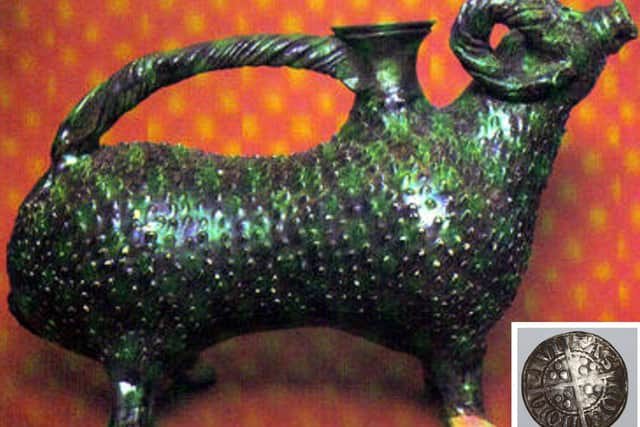Trade was going like a fair in Clydesdale in Middle Ages
and live on Freeview channel 276
That was the reason Lanark became one of the four most important burghs in Scotland in the late 15th century. Our main export was wool and imported goods, includuing spices, pottery, bronze and iron items and wine.
The main reason for the wealth of this area was the time and money invested into the villages and burghs of Clydesdale. The abbeys of Kelso and Dryburgh played a pivotal role in this by encouraging sheep farming.
Advertisement
Hide AdAdvertisement
Hide AdThis was a wise choice as much of the land is fairly stony as a result of the last glaciation and unsuitable for crops. But it was not only the abbeys that were involved, the nobility and the merchants played an important part.


It was not until the late 12th century that small settlements began to pop up in rural Clydesdale. This was due to the encouragement given by Malcom IV to Anglo Norman settlers from England who were eager to escape from the Civil War in England between Stephen and Matilda.
The settlements that they founded were called after them, for example Tancard founded Thankerton and Simon Loccard created Symington.
There are few clues as to the presence of these settlers apart from the occasional finds of early Medieval pottery and silver pennies dating back as far as William the Lion.
Advertisement
Hide AdAdvertisement
Hide AdLanark was the earliest burgh to be founded around 1140 by King David I who placed the administration of the town into the hands of Malcolm Fleming from Biggar. It was the only royal burgh in Clydesdale.
Biggar and Carnwath were burghs of barony; the right to set up a burgh of barony was given for the benefit of a local family. However, this cost the families money since the king received a payment for granting this privilege. These burghs no longer exist today as that right was done away with in the 1860s.
Evidence for the wide-ranging trade between Clydesdale and Europe is not only attested by historical documents but also by artefacts. Historical documents show there were strong trading links between England and Scotland. There was a 65-year period of peaceful trade between England and Scotland from 1232 to 1297. The evidence takes the form of coins of both the reigns of Henry III and Edward I. Pottery too has been found in digs in Lanark from Scarborough and Nottingham.
There is less evidence of trade with France apart from the occasional French Jetton/counters. Such pottery came from Santonge, near Bordeaux. This area was under English occupation at the time; it was an important source of Scotland’s favourite drink in those days – claret.
Advertisement
Hide AdAdvertisement
Hide AdCoins coming from the Low Countries have been discovered which came to Scotland through the wool trade. These coins were somewhat similar to English pennies but contained less silver so were not popular.
Other pieces of evidence of trade with Europe include German salt glaze pottery, found in a rubbish pit in the Broomgate and Ardenberg Ware from modern Holland/Flanders was discovered during the excavation of the Greyfriars’ monastery.